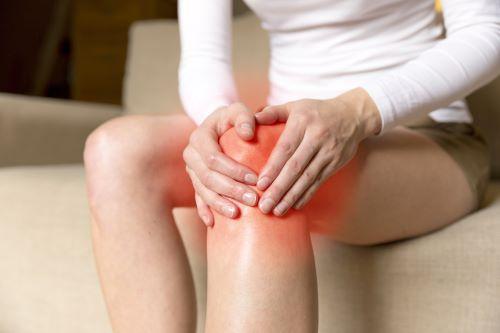What Is Inflammation - May 13, 2019

Millions of people suffer each year from inflammation in one form or another. The causes of inflammation are vast and sometimes can be difficult to pinpoint. Whether it stems from injury, disease or other internal/external factors, the effects of inflammation can have resounding consequences on how individuals live from day-to-day.
The Process Of Inflammation Many medications exist that are designed to help relieve the symptoms of inflammation. However, apart from treating the symptoms, have you ever wondered - exactly what it is that happens inside the body to create the actual discomfort? Let’s start with the definition of inflammation.
According to Webmd, inflammation is the process the body experiences when it employs white blood cells and other substances it produces to aid in fighting off infection and foreign organisms.
Any time your body sustains an injury, a battalion of white blood cells is deployed to clean up any germs or invaders that could enter at the site of the injury. We can think of white blood cells as the body’s internal cleaners – like little vacuums.
Inflammation Symptoms: Pain
Throbbing
Heat
Redness
Swelling
Joint Discomfort
The Inflammatory Process The inflammatory process increases blood flow to the areas in need of repair and healing. When a cell is damaged or experiences trauma, it releases a localized hormone called Prostaglandin.
According to the National Center for Biotechnology Information – prostaglandins can induce fever, inflammation and pain after being released from damaged cells. There are also other activators released by cells called Thromboxanes.
Thromboxanes help to regulate various hormones and blood related levels including platelets and the formation of clots. They act almost like a project manager hormone to oversee the blood team’s daily tasks. All these hormones work together in producing the body’s inflammatory response to perceived invaders, abnormalities or trauma.
How Inflammation Causes Pain Basically, our bodies send more blood to the localized areas that need to be addressed. The increased blood, along with the releasing of hormones and other substances is what causes the warmth, swelling and throbbing we feel with inflammation. This process can also stimulate the surrounding nerves in these areas and lead to additional pain and discomfort. Depending on the area(s) being addressed i.e. bones, muscles, tissues, joints etc., the symptoms and pain levels will differ.
As we mentioned at the beginning of this article, there are lots of different medications that can be prescribed to help treat the symptoms of inflammation. One of the more popular medication types is NSAID:
NSAIDs – Nonsteroidal anti-inflammatory drugs (Aspirin, Ibuprofen, Advil, Motrin)
NSAIDs are prolific in that they can reduce both pain and inflammation by blocking some of the above mentioned chemicals/ hormones. However, recent studies have uncovered significant side effect profiles from prolonged use of NSAIDs.
According to an article found at www.health.harvard.edu, prolonged usage of NSAIDs can lead to complications including increased risk for heart problems. The risk factor compounds the longer the drugs are used. There is also increased risk for stomach and gastro intestinal issues including ulcers and bleeding in the gastro intestinal tract.
Another potential problem with prolonged usage of these types of anti-inflammatory drugs is the fact that they reduce blood flow to combat swelling. While this can be beneficial at times, continued reduction of blood flow to filtering organs such as the kidneys could pose serious health risks further down the road. It is advised that you consult your physician before taking any type of medication(s) for prolonged periods of time.
Sources:
Inflammation Symptoms:
Thromboxanes help to regulate various hormones and blood related levels including platelets and the formation of clots. They act almost like a project manager hormone to oversee the blood team’s daily tasks. All these hormones work together in producing the body’s inflammatory response to perceived invaders, abnormalities or trauma.
NSAIDs – Nonsteroidal anti-inflammatory drugs